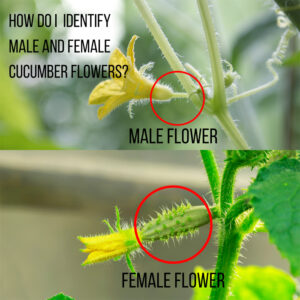
By Carla Janell Pattin, PhD
The Truth Contributor
When I first met Elaine Page in the fall of 2021, I was officially graced with her presence, skill and wisdom. These are all elements needed to lead a community center committed to ending food apartheid by growing an urban farm as one avenue to meet the needs of the times.
While serving at Grace Community Center, hereafter known as GCC, I’ve learned to be more creative and a better problem solver. Yet, I needed more grace to learn how to shift with the weather patterns, changing seasons, and the right timing in caring for many plants.
Meeting Ms. Page and other servant leaders like Preston Ingram felt like divine timing, always keeping in mind that grace will hold the sun for us to have ample opportunities to do some good for ourselves, our families, our communities, and our Earth. Growing at grace is perfect timing.
Grace for the Times
If you have not started your garden, I want to let you know it is not too late. Do not allow the billion-dollar gardening industry to make you feel like you’ve missed the deadline to grow your own food. It is easy to lose faith because your local gardening supply stores are clearing their inventory. Still, many stores have placed vegetable plants and gardening supplies on sale. So, you are graced for the times!
June is the Grace Period
June is the perfect time to begin gardens. Peppers, tomatoes, cucumbers, watermelon, and squash can all go in the ground now because the temperature is ideal for these plants. Nothing is more satisfying than seeing your food flower and form, but may I suggest something to you? These plants need a grace period to form a good root system.
Once the flower buds form, cut them off for about two weeks so the plant’s energy can go toward a solid root system. Once the roots are good and deep in the soil, the plant will use the energy to form the actual pepper, tomato, cucumber, watermelon, and squash. Think of your garden as yourself. Growth requires cutting off things that seem visibly good at the time. Establishing your roots, or the good things you cannot see, are often more critical than the visible. Plants require the same grace and process to bear good fruit, just like us!
Grace Will Hold the Sun for You
June is the perfect time to plant fall crops. They can thrive until November and even in December here in northwest Ohio with great care. You can plant kale, collard greens, cauliflower, bunching onions, cabbage, radishes, and many others right now. It is good because the weather is nice and they will thrive well. Given the state of climate change, I have harvested collards and kale in early December!
When the frost hits, it activates the plant’s sugar enzymes, making these crops taste very good. Other crops like spinach, sugar snap peas, and lettuce can be planted by seed sometime in August. These plants cannot tolerate scorching heat for too long. Still, they can thrive during the cooler months like September, October, and even early November. If you plant single crops like beets and carrots, you can often plant seeds throughout the summer to maintain a consistent food supply. I hope to persuade you to grow a garden at the end of June. Are you excited?
First Fruits of the Harvest
Suppose you are blessed with good timing; harvesting, watering, pollination, pruning, trellising, and pest control may describe your current tasks in the garden. First, harvest your plants on time. Harvest time is necessary because leaving the fruit on the vine will change the taste from sweet to bitter. Leaving the fruit on the vine for too long can increase plant diseases. Even worse, the plant may get a signal to stop growing because the energy keeps the fruit on the vine.
Crops like kale and collards need space to breathe. I know having a pleather of green goodness is beautiful for pictures. Still, a lack of airflow between plants increases diseases. After harvesting, your plants need to cool off, especially during the extreme heat. While you can dunk your collards and kale in water, you should never wash tomatoes, peppers, okra, cucumbers, squash and beans until ready to be eaten. GCC and their urban farming class taught us that dunking these crops in the water begins the decomposition process.
Pass Through the Waters
Second, water is essential, and your garden needs it, but water is tricky, and you may need some grace in this area. Do not allow water to get on the plants or let it form a puddle on the leaves. While I agree that rainwater is perfect for plant growth, it can create an environment for diseases if the water puddles for too long.
GCC has a moisture meter where we can tell if our crops have received enough water. The goal is to water about six inches deep; most vegetables need about 1-2 inches of water per week. Watering by hand is time-consuming; you’ll get an uneven water distribution. Furthermore, it is a wasteful practice, given that many BIPOC environmental movements are fighting for equitable access to water.

If you can only hand water, aim the spray gun directly in the soil and pull back on the pressure to prevent from dislodging the plant. If the water runs off, the plant has gotten enough to drink. Suppose you want to know more about how to water more effectively. In that case, you can get hands-on urban farming and education training by contacting GCC.
Fruitful and Multiply
Third, the flowers on the cucumbers should be forming by now, and they can benefit from hand pollination. I hand-pollinate my cucumbers with a tiny paint brush. I insert the paintbrush into the male flower and carefully roll it inside the flower to capture the pollen grains. Then, I transfer the pollen grains on the paint brush to the female flower for a bountiful harvest. As your cucumber plant grows, tendrils (vines) will appear, and they will be ready to attach themselves to a trellis for climbing.
Carefully identify a healthy tendril, gently wrap the tendril around the trellis and then release the tendril. The tendril will grab ahold and wrap around the trellis tightly. Cucumbers and Kentucky Wonder beans climb like this, one of the most exciting parts of growing climbers. But, like us, they need grace, space, and a support system to grow and thrive!
Prune and Divide
Fourth, prune the plant and cut the suckers for adequate growth. At times, you may not need gardening shears. Instead, you can gently clip off the suckers with your fingers. It may feel painful to prune, but these practices reduce diseases. If this process is too painful, you can cut the tomato sucker, put it in the water in a sunny location, and watch the roots form. Be sure that your garden tools are clean and sanitized. Plants are like us; growth in the right direction is important in due season!
 Pest Management
Pest Management
Fifth, I know you’ve seen the white butterflies hovering over your garden by now. I am talking about Cabbage moths! The cabbage butterfly hatch eggs found in the soil or on your kale, collards, cabbage, and even your flowers. The worms chew through your food, which can destroy your garden. You’ll need BTs (Bacillus thuringiensis) products to treat your garden. I know, I know. I’m not too fond of pesticides too. I know there are other unconventional techniques for pest management.
I can testify to the effectiveness of applying blood meal to the soil before planting kale and collards. I noticed increased nitrogen in the soil strengthens the leaves, making them strong enough to sustain the damage. But, I cannot advocate using blood meal mixed in the soil as the only solution. I can do more research on pest management, and I am happy to provide you with some answers.
I wish everyone grace, blessings, and good timing over you and your gardens! I will share more tips, tricks, and pitfalls I’ve learned throughout the planting, growing, and harvest seasons. If you are interested in learning more about gardening, please follow me on Instagram @Theharvestdoctor or contact me via email Carla.pattin@utoledo.edu. For hands-on training in urban farming and education on how to bring your garden to scale, contact Grace Community Center’s farming manager, Preston Ingram, at 419-248-2467 or Elaine Page, director, to enroll in the Central State University’s Fast Track Farming Program.
Ed. Note: Carla Janell Pattin, PhD, is assistant professor of Humanities at the University of Toledo. She can be reached at her office at 419-530-2629 for questions on gardening.
